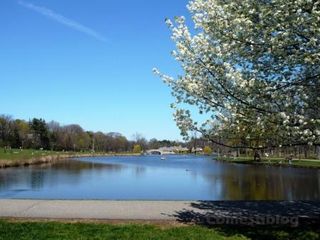




Jason Jurik
Real Estate Agent In NJ

Cell: 201.280.6795 Office: 201.939.0001 Email: Jasonj@realestate-jersey.com
Real Estate in Montclair NJ

Jason Jurik grew up in Bergen County in the Lyndhurst / Rutherford area for 30 years and now lives in Verona, NJ for the past 8 years.
www.montclairnjusa.org
For thousands of years before the beginning of European settlement, the area we know today as Montclair was part of the homeland of the Lenape Indians, who hunted and trapped here and passed over the mountains on their way to gather shellfish at the shore. Such place names as Watchung (on the hill) and Yantacaw (place of dancing) bear witness to their heritage.
The story of Montclair as a settled community, however, begins with the founding of Newark by English people from Connecticut in 1666. The lands of the Newark settlement extended westward to First Mountain, and having acquired acreage at "the foot of the mountain," Azariah Crane, his wife Mary Treat Crane, and their son Nathaniel, built a home in 1694 near the present intersection of Orange Road and Myrtle Avenue. Other pioneers arrived soon after, and the frontier settlement of Cranetown came into being in what is now the southern part of Montclair.
In 1679 Dutch settlers acquired land from the Lenape Indians west of the Passaic River and north of Newark, an arrangement later confirmed by the British government. Early in the 1700's John Speer, a member of the Dutch community, built a home that stands today on Upper Mountain Avenue just north of the Montclair border. Other Dutch settlers established farms in what is now the northern half of Montclair. This community became known as Speertown. Later Valley Road was laid out, thus providing a link between the two settlements.
During the Revolutionary War, First Mountain provided observation points for following the movements of the British to the east. A strong tradition holds that both George Washington and the Marquis de Lafayette were in Cranetown briefly in October of 1780. The boulder at the corner of Claremont Avenue and Valley Road marking the site of "Washington's Headquarters" is one of Montclair's better-known landmarks.
Speertown would remain a rural hamlet well into the 19th century; however, beginning about 1800, several developments led to the transformation of Cranetown into a small commercial center. One development was the opening of a general store by Israel Crane, who received trade from a wide area. In 1806, Crane led a group of businessmen in obtaining a charter from the State for building the NewarkPompton Turnpike. Constructed over the next several years, the turnpike came through Montclair as Bloomfield Avenue and vastly increased the flow of commerce. Israel Crane broke new ground as well in opening a wool mill on Toney's Brook. Other small industries followed. Also important for the economic development of the area was the completion of the Morris Canal in 1831. Meanwhile, in 1812, the Bloomfield ward of Newark became a separate township, which included the future Montclair. The village of- Cranetown now became known as West Bloomfield and a post office was established under that name.
The most decisive event for the emergence of Montclair was the coming of the railroads. In 1856, the Newark and Bloomfield Railroad Company inaugurated regular service to West Bloomfield. By changing trains at Newark and taking a ferry from Hoboken, people could travel from the future Lackawanna Plaza to New York in an hour and twenty minutes. Attracted to the country setting with its panoramic views, people in the cities began riding the train to West Bloomfield, some for Sunday excursions, others for vacations, and still others seeking to make their home here. By 1860 West Bloomfield was becoming a commuter town with its own marked identity and influential residents persuaded the post office to adopt the name Montclair.
Dissatisfaction with existing service led to a move to bring a second railroad to town. When Bloomfield authorities declined to authorize a bond issue to underwrite another railroad, Montclair residents were successful in securing from the State legislature a charter for a separate township. Thus in 1868, the Township of Montclair was created. The plan for another railroad went forward and by 1873 the Greenwood Lake line was completed with five stations in Montclair. In time, as many as six-thousand people would commute daily from Montclair via the two railroad lines. Trains also ran on Sunday.
The population of the community grew rapidly as New York businessmen and their families began building homes along the mountainside. The new residents sought to create in Montclair a model "country town" with convenient access to the city. Their vision was shared by a notable artist colony that began forming in the 1870's. A central figure was the landscape painter, George Inness. Able and dedicated community leaders endowed the town with superior schools, an excellent public library, a distinguished art museum and many large and influential churches.
By the opening of the 20th century, a richly diverse population characterized the community. A new influx of New Englanders was joined by African-Americans from the South and by Irish, Germans, Italians, Scandinavians and others newly arrived from Europe. Great mansions went up, but so did many modest homes. Between 1880 and 1930, Montclair's population leaped from 5,147 to 42,017. Talented people continued to be attracted to the community and by the 1930's more than 130 Montclair residents were listed in each issue of WHO'S WHO IN AMERICA.
The period following World War II was marked by tremendous expansion of the metropolitan area. New suburbs popped up in the hinterland along with shopping malls and corporate offices. No longer a country town, Montclair faced the challenge of preserving its character as a gracious residential community while at the same time sustaining its aging commercial centers. Social changes of the 1960's and 70's brought further challenges. In 1977 the Board of Education established a system of magnet schools with the aim both of achieving racial balance and of enriching the curriculum. After many years under the commission form of government, the community adopted the manager-council plan. Revenue considerations led to the Town of Montclair returning to the status of Township.
Today Montclair is a community of about 39, 000 inhabitants. Never content to be merely a "bedroom community," Montclair is nevertheless a family-centered town. Its heritage in education has been enhanced by its innovative public and private school educational programs and the expanded offerings at Montclair State University. Once again our hillside has become a haven for artists and writers. This is a seasoned community whose many old houses enhance its charm, yet at the dawn of a new century, Montclair remains alive to the spirit of the times.
Buy Sell Real Estate NJ
Better Homes and Garden Real Estate - Coccia Realty
Essex County Towns I Specialize In
11 Park Ave
Rutherford, NJ 07070
201-939-0001
201-280-6795
Rutherford, NJ 07070
201-939-0001
201-280-6795


Website designed and hosted by: AACOM, INC.
This website design is Copyright of Aacom, Inc. and may not be copied. All rights reserved 2014
Website viewer agrees that Aacom, Inc. or it's affiliates will not be responsiblefor typographical errors, omissions or services provided by the business which is represented on these webpages.
Website viewer agrees that Aacom, Inc. or it's affiliates will not be responsiblefor typographical errors, omissions or services provided by the business which is represented on these webpages.
- Verona
- Cedar Grove
- Glen Ridge
- Montclair
- Essex Fells
- Roseland
- Caldwell
- West Caldwell
- North Caldwell
- Nutley
Montville
Madison
Kearny
Lyndhurst
Rutherford